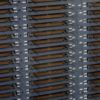The PC based analyzers provide high-speed testing for wire harnesses, backplanes, and printed-circuit boards. They provide diode testing, resistance, and capacitance measurements, and build aids. They have a broad range of test applications from simple wire harnesses to prescreening of loaded circuit boards. The analyzer consists of a PC based System Controller, with Keyboard, Mouse, Monitor, and one or more expansion cabinets housing scanner boards.
All PC based analyzers have an extensive assortment of programmable options to allow customizing of tester operations, test results printing, and test results storage and evaluation using a statistical report system.
A tester can have up to 32 expansion cabinets. The System Controller and each expansion Cabinet can be separated by up to several hundred feet, for applications requiring interconnects spread over a large area, as in testing aircraft and shipboard cabling.
Test programs are created internally using the keyboard and a specialized wire list editor, or obtained externally by learning (scanning) a completed assembly, or importing wire list in Excel format. Test programs written for one version of PC based testers can be run on any other version simply by changing the test voltage and isolation settings. Operator use is enhanced by a menu-driven user interface.
TEST FEATURES
· Component measurements
· Programmable thresholds
· Programmable test methods
· Wire list programming
· Statistical data reporting
COMPONENT MEASUREMENTS
The PC based analyzers can be programmed through the keyboard and built-in editor to define component values and tolerances for circuits containing resistors, capacitors, and diodes. Additionally, diode and capacitor polarities can be defined, as well as diode forward voltage drops.
PROGRAMMABLE THRESHOLDS
Continuity and isolation (shorts) thresholds can be programmed and are stored with the test programs.
PROGRAMMABLE TEST METHODS
The PC based tester performs tests in a variety of methods: continuity, opens, and shorts tests are individually selectable. A single test scan or continuous scans may be performed. There are three selectable formats for displaying test results: display the value of each circuit and component tested; display only the failed circuits and components; display just the final pass/fail status. Passwords can be programmed to control access to high voltage testing. Complete test results may be printed, or a pass/fail label may be printed.
WIRE LIST PROGRAMMING
Test programs can be generated by scanning known-good assemblies. A full-function program editor provides wire list programming through the keyboard when a known-good assembly is not available. The program editor is also used for programming components, changing test parameters and options, editing existing programs, or assigning circuit labels.
STATISTICAL DATA REPORTING
Test results may be serialized and stored for use in generating test summary reports. Build times may also be saved for use in creating reports comparing assembly times against standards.
BUILD FEATURES
· Body conductance
· Programmable build methods
· Shorts testing
· Graphical Operator Instructions
· Last-circuit retest
BODY CONDUCTANCE
Body conductance is used during harness build to locate and identify points by touch. Audio as well as visual outputs indicate when the correct point is touched.
PROGRAMMABLE BUILD METHODS
During harness build, the PC based testers verify each circuit as it is terminated. It can operate in a predetermined build sequence or allow terminations at random. The build method can be programmed to switch automatically between sequential and random. The wire list may also be grouped to allow a section to be routed without terminating. Once the section is routed the tester verifies each circuit as it is terminated.
SHORTS TESTING
The PC based testers verifies that the circuit being terminated is not shorted to another circuit (normally occurring when a wire is inserted incorrectly.)
GRAPHICS
Graphics and text displays during assembly provide detailed work instructions.
LAST-CIRCUIT RETEST
The PC based testers can be set to retest the previously terminated circuit for continuity. If that circuit becomes unterminated, the tester automatically backs up, allowing retermination. This feature prevents the tester from permanently advancing and displaying the next circuit while the immediate circuit makes only temporary contact with the terminating point. Connector pins that back out after the operator releases the wire will also cause the tester to back up.
PROGRAMMABLE OPTIONS AND PARAMETERS










